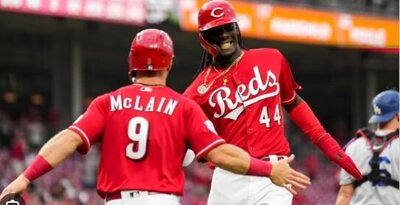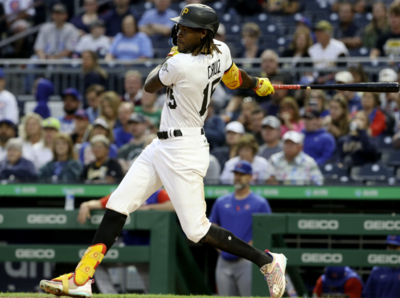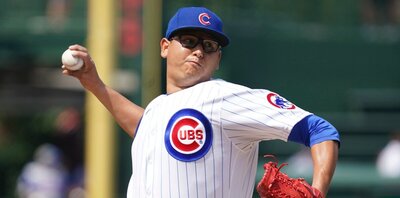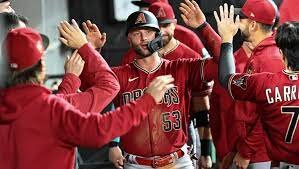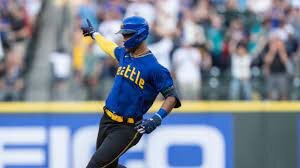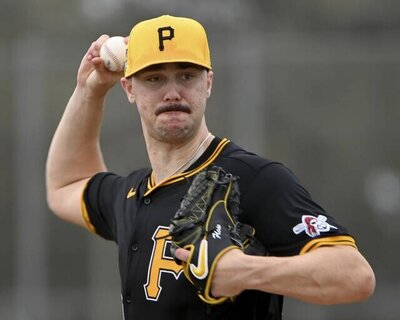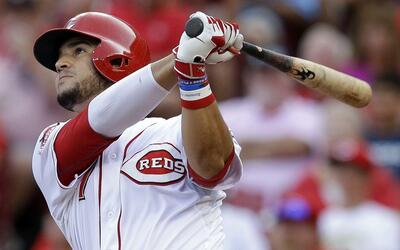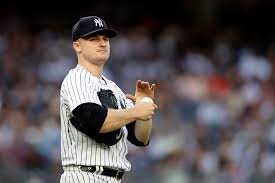Dan Haren:
I thought this was the Dan Haren we got during the 2nd half? The guy who struggled to keep the ball in the park and as a result struggled to pitch to his peripherals. This year the situation has become exaggerated as Haren allowed 4 more HR’s on Thursday and has now yielded 16 in 74 IP. Some of this would appear to be bad luck as Haren’s HR/FB Rate entered Thursday’s start approaching 17% (career 11%), but the numbers are so off the charts I don’t want to chalk it up to simply poor luck. Perhaps fatigue is at play. As Paul highlighted in our last blurb on Haren a few weeks ago he’s eclipsed the 110 pitch mark a number of times early in the season and after a string of 4 starts in a row being pushed to that limit, the HR barrage accelerated (10 in the following 3 starts). I noted the high HR/FB Rate and digging back through his career monthly splits they tend to approach 17% and higher in August and September. Given the similarity between those rates and what we’re seeing now I have to think fatigue may be at play. Many have downplayed Haren’s value because of his 2nd half fades in the past suggesting he’s not built to go the distance. Perhaps he’s not built to consistently throw 110+ pitches and we’re seeing some of that fatigue now translate into an increased HR rate? While we’re all searching for an explanation I think this one makes sense. The K’s are still there and the good command is there but the incredibly elevated HR Rate is erasing all value. For now I think you have to keep running him out there and hope for better results through a reduced workload.
Ted Lilly:
I was pretty bullish on Lilly early in the season but have been heeding caution of late on twitter due to the decreased velocity we’ve seen from Lilly early in the season (down to just 85 mph on his fastball). Fortunately for Lilly’s owners he continues to defy my concerns by pitching well. On Thursday he registered his 3rd consecutive quality start tossing 7 shutout innings against the Dodgers allowing just 3 hits and 3 bb’s. He struck out 5, which is encouraging but the drop in velocity has impeded his K Rate this season as we’ve seen it drop down to 5.02 K/9, after sitting near 8 for each of the last 4 years. Eventually the increased amount of balls in play is going to bleed into the WHIP and ERA, as evidenced by an xFIP approaching 5. With the recent string of hot starts, owners may want to take advantage of this opportunity to sell high. Decreased velocity leading to decreased K Rate is a recipe for increasing ERA and WHIP. It’s simply a matter of time.
John Ely:
I noted when Ely first came up that there were some intriuguing skills, but as importantly some appealing opportunity in the Dodgers rotation. Ely has taken advantage throwing 5 consecutive quality starts after a rough debut. On Thursday he was flawless until the 8th inning when he allowed back-to-back doubles that cost him the game. He finished allowing just 4 hits and 1 ER over 7 1/3 innings. He showed his usual good command, walking just 2, and struck out 4. His GB Rate continues to climb, which was something he did at the minor league level, and his K:BB Ratio stands at a stealler 28:3 in 33 May innings. Ely hasn’t received a ton of hype but I’m starting to think we might have a Randy Wells type season on our hands. His skills are better than Wells but the numbers could end up similar to Wells 2009 season. Ely’s currently sporting a tidy 3.23 xFIP.
Ricky Nolasco:
After a monstrous 2nd half and big spring training, Nolasco looked poised to become a fantasy ace this season. He showed signs of dominance in April yielding just 1 ER in 17 innings in Philadelphia and in Colorado in back-to-back starts but has faded significantly in May. As Schuyler indicated in his last blurb on Nolasco the command has been there, but he’s not generating as many swings and misses. A look into his Pitch f/x data only confuses things further. Nolasco’s velocity has been down this season but he’s actually generating more horizontal movement on both his slider and curveball. In addition he’s generating more swings outside the zone. The problem is opposing batters are making more contact on those pitches outside the zone and as a result he’s getting less K’s. From watching him I was surprised the movement was better than in years past as his slider and curveball actually look a bit flatter this year than in years past (perhaps there is some confirmation bias going on there though). The numbers seem to indicate reasons for optimism but my eyes indicate reason for concern. On Thursday Nolasco’s evening was shortened due to rain but he had surrendered 8 hits and 3 ER’s in 4 IP, striking out 3 and walking none.
Casey McGehee:
McGehee’s low LD Rate has gotten a lot of attention from my colleagues, but I’m not sure its deserved. Instead I’d prefer to look at the significant improvements in his EYE (.70) driven by improved contact (87%), and ISO (.225). Sure the batted ball story confuses the picture a bit, increasing GB Rate with increasing power and low LD Rate with league average BABIP, but I’m inclined to believe the batted ball data will eventually catch up with the results. McGehee’s showing improved selectivity at the plate and improved power. Given the lack of name value I think he’s a tremendous “buy-high” candidate and someone who will approach .295-25-100 this season with dual 2B-3B eligibility in many leagues.
There are over 100 player news blurbs posted in the member area each morning, members can read the rest of today's player news by clicking here link:www.fantistics.com/baseball00/. Not a member? Join today link:www.fantistics.com/join/join.php3
Also if you're interested in daily updates and analysis from my vantage point. Follow me all season long on Twitter at http://twitter.com/DrewDinkmeyer

